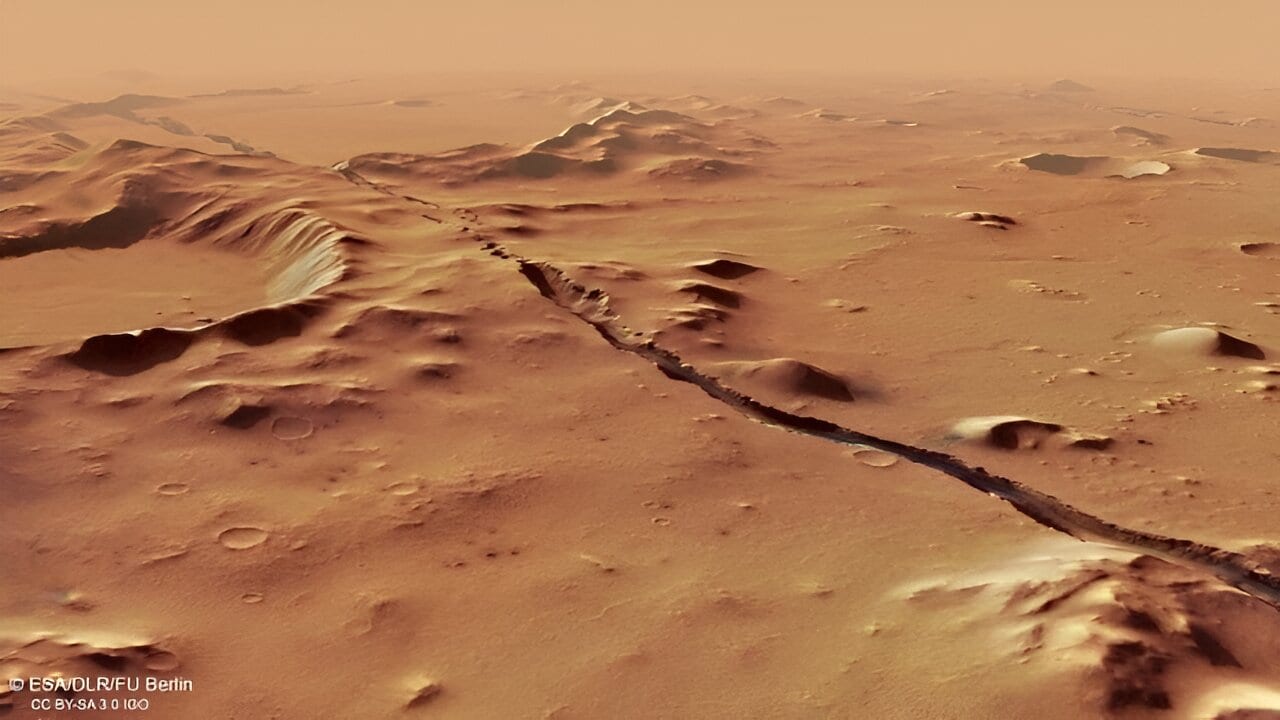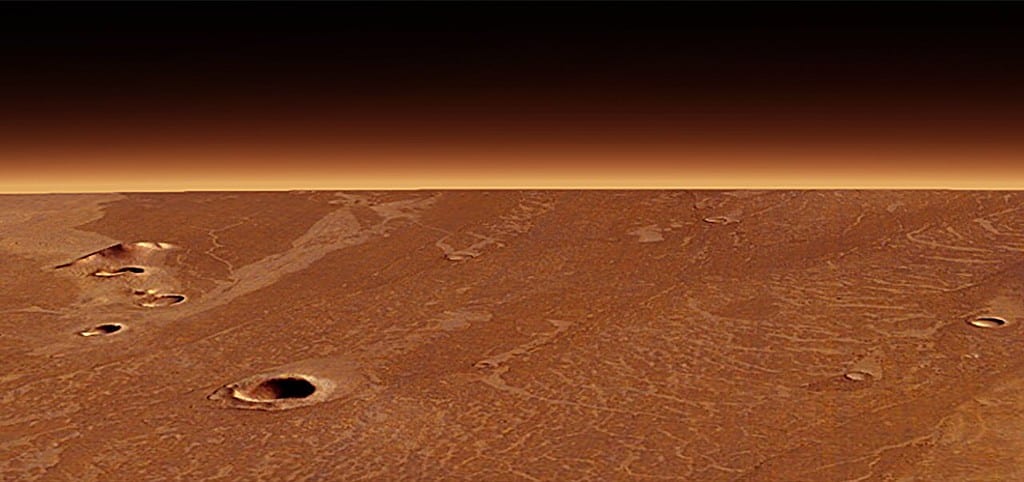A seemingly featureless plain on Mars surprised researchers by revealing a far more dynamic geological history than anticipated. Extensive volcanic activity, with lava outflows from multiple fissures, occurred as recently as one million years ago, blanketing an area as big as Alaska. The lava interacted with water, resulting in floods that carved out deep channels.

Mars doesn’t have plate tectonics — the shifting pieces of crust that reshape Earth’s surface. So, geologists have thought that Mars has long been a geologically “dead” planet where not much happens. However, recent discoveries are now challenging this idea. A study last year found evidence of a giant mantle plume underneath the region Elysium Planitia, which triggered intense volcanic and seismic activity in the recent past.
In a new study, a team at the University of Arizona combined spacecraft images and measurements from ground-penetrating radar to reconstruct in 3D detail every lava flow in Elysium Planitia. The survey revealed and documented more than 40 volcanic events, with one of the biggest infilling a valley called Athabasca Valles with almost 1,000 cubic miles of basalt.
“Elysium Planitia is the youngest volcanic terrain on the planet, and studying it helps us to better understand Mars’ past as well as recent hydrological and volcanic history,” the authors write in their paper. While no volcanic activity has been seen on Mars, the study suggests that Elysium Planitia was more active than expected and could even be active today.
Anything but dead
Many quakes have been recorded on Mars by NASA’s InSight Lander between 2019 and 2022, suggesting that the red planet is anything but dead beneath the surface. The strongest one, with a 4.7 magnitude, occurred in May last year due to tectonic forces within the planet itself, according to a study published earlier this year. Many marsquakes could be attributed to asteroid impacts, but not this one.
The new findings have implications for research on whether Mars could have harbored life at some point in its history. Elysium Planitia shows signs of having had several big floods in the past. There’s also evidence that lava interacted with water or ice, shaping the landscape. Studying the region, the researchers found evidence of steam explosions that might have created environments suitable to microbial life.
“Our study provides the most comprehensive account of geologically recent volcanism on a planet other than Earth,” Christopher Hamilton, one of the study authors, said in a news release. “It is the best estimate of Mars’ young volcanic activity for about the past 120 million years, which corresponds to when the dinosaurs were roaming the Earth at their peak to present.”

The researchers used images from the camera onboard NASA’s Reconnaissance Orbiter, or MRO, which has studied the red planet since 2006. To get topographical data, they used records from the Mars Orbiter Laser Altimeter on another NASA spacecraft, Mars Global Surveyor. The data was combined with subsurface radar measurements, looking as deep as 140 meters.
Understanding Mars’ interior
Mars’ interior is believed to be very different from Earth’s, and a reconstruction of its geological features could give scientists a glimpse into the processes that shaped it. The link between volcanoes and the structure of the Martian crust is key to understanding the planet’s environmental conditions. A volcanic eruption can allow for a major groundwater release onto the surface, Hamilton said.
When there is a crack in the Martian crust, water can flow onto the surface,” Hamilton said. “Because of the low atmospheric pressure, that water is likely to literally just boil away. But if there’s enough water coming out during that period, you can get a huge flood that comes through, racing over the landscape and carving out these huge features that we see.”
How water has moved around Mars in the past and where it is today is the million-dollar question, the researchers said. As the equatorial regions are easier to land on compared to the planet’s higher latitudes, the presence of water and understanding how it’s released would be valuable information for future human missions to the Red Planet.
The researchers intend to continue using the extensive and intricate datasets acquired through various imaging techniques to generate highly detailed, three-dimensional perspectives of the Martian surface and its subterranean features. This approach will also involve creating a chronological sequence of events related to other volcanically active regions.
The study was published in the Journal of Geophysical Research.









